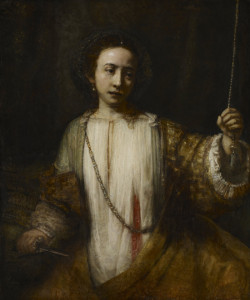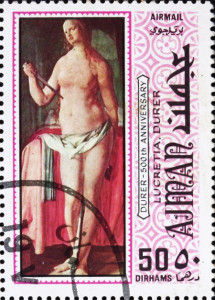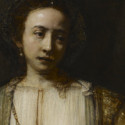A recent performance of Benjamin Britten’s opera The Rape of Lucretia made me think about the dualities of masculine and feminine and the role of contrast in creating and performing art. Artists learn to understand and use the duality of opposites in their work.

The mixing of contrasts can create balance and pull the artistic expression together as a whole work of art. Artists realize that while contrast is vital, the various aspects must work together as a whole without one part overpowering the other. They work together in harmony.
The themes of the Lucretia story are enduring and have lived on throughout history to be relevant even in the 21st century. Besides the opera by Britten, many visual artists have captured this subject in their works—Botticelli, Titan, Dürer, Rembrandt, Raphael, and others.
All existence seemed to be based on duality, on contrast.
~ Hermann Hesse
The dualities of masculine and feminine not only impact our own lives as individual human beings, but also our collaborative work with others in relationships, family, and work settings. If we think like an artist to balance the contrasting elements of our individual selves as works of art, we can stimulate our thinking about deeper understanding and the realities of living and leading in the midst of the rapidly changing environment of the 21st century. The artist’s job is to find that perfect balance between the two. When you understand the differences and the power of these contrasting elements, you will be better able to balance them and create more powerfully from that fullness.

An artist learns to balance the distribution of creative elements within a work of art. You can learn to do the same thing in your life.
[sws_checklist]
- Do you find yourself wanting to withdraw from others and become silent?
- Do you get easily irritated?
- Do you want to get even?
- Do you become inflexible and cruel?
- Do you feel insecure and vulnerable?
[/sws_checklist]
Balance allows you to connect with people from inner strength. With balance, you can deal peacefully with your environment. You can feel more fulfilled. You are centered and flexible.
Balance is beautiful.
~ Miyoko Ohno

Dürer’s painting shows the moment before Lucretia took her own life. Power struggle, strength, and honor fill this moment in the story and demonstrate the dynamics of seemingly contradictory tendencies of control and freedom. For artists, these contrasts are constant, not only in the expression of their works of art, but within themselves as human beings.
Creating great art involves mixing constant attention to total control of the language of the art form set against a personal flow that allows these and other factors to blend naturally. This must all be done in a way that produces enduring artistic results. The challenge is to develop the ability to use the contrasting aspects at the most productive moments.
I try to contrast; life today is full of contrast…. We have to change.
~ Gianni Versace
Many believe that the 21st century calls for us to embrace our more feminine aspects to balance the masculine qualities that appear to have overtaken our culture. Imbalance in our world is evidenced by our anxiousness, fear, and state of chronic stress. We can become great artists in our everyday lives by developing the strength to balance and combine contrasts within ourselves and in every aspect of our lives. As works of art evolve, so does the artist.
— Pat
Sign-up for the Arts Awareness eNewsletter and receive a free gift “Three Lessons to Begin to Make Artistic Principles Work for You in Fascinating Ways.” Like Arts Awareness on facebook.
